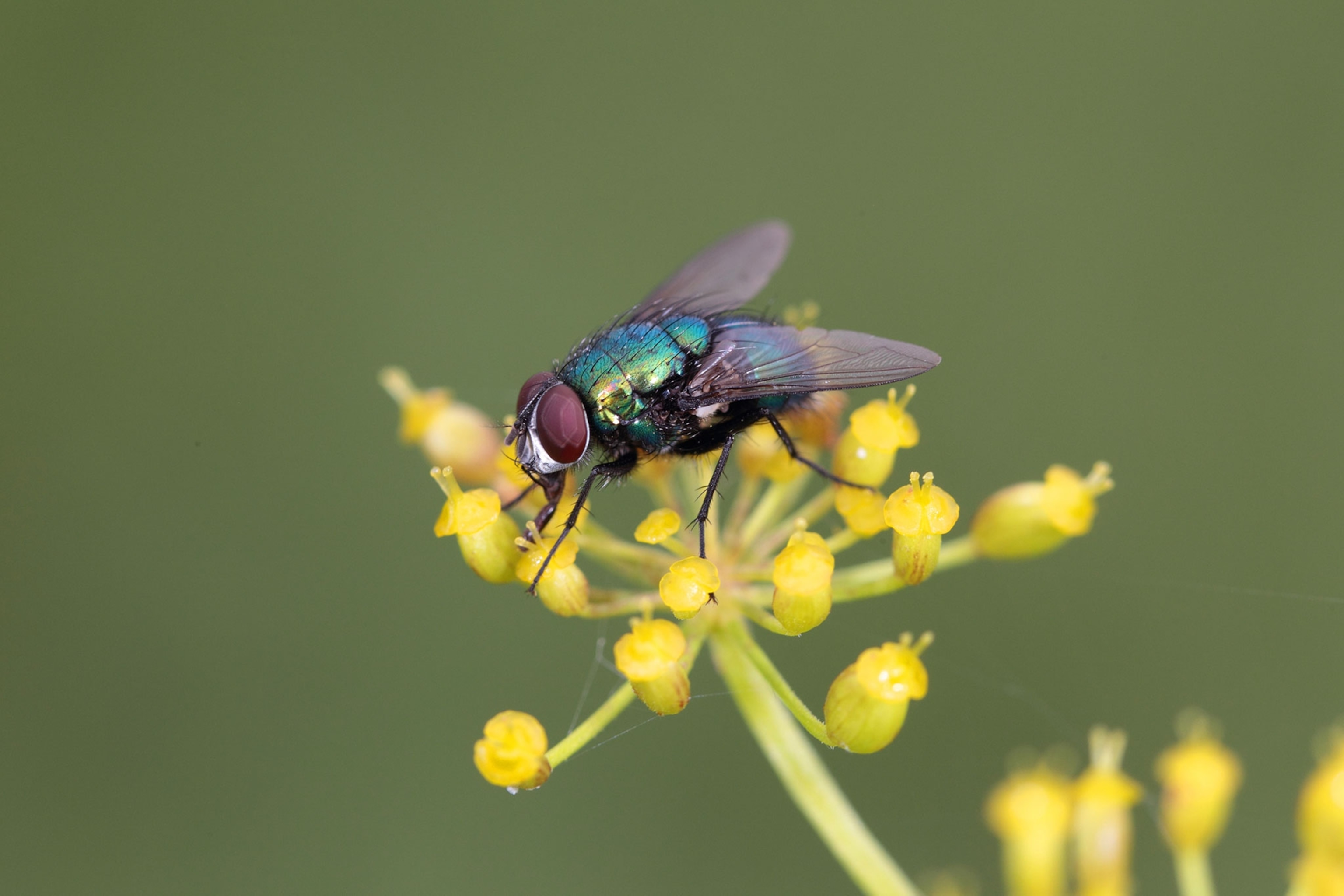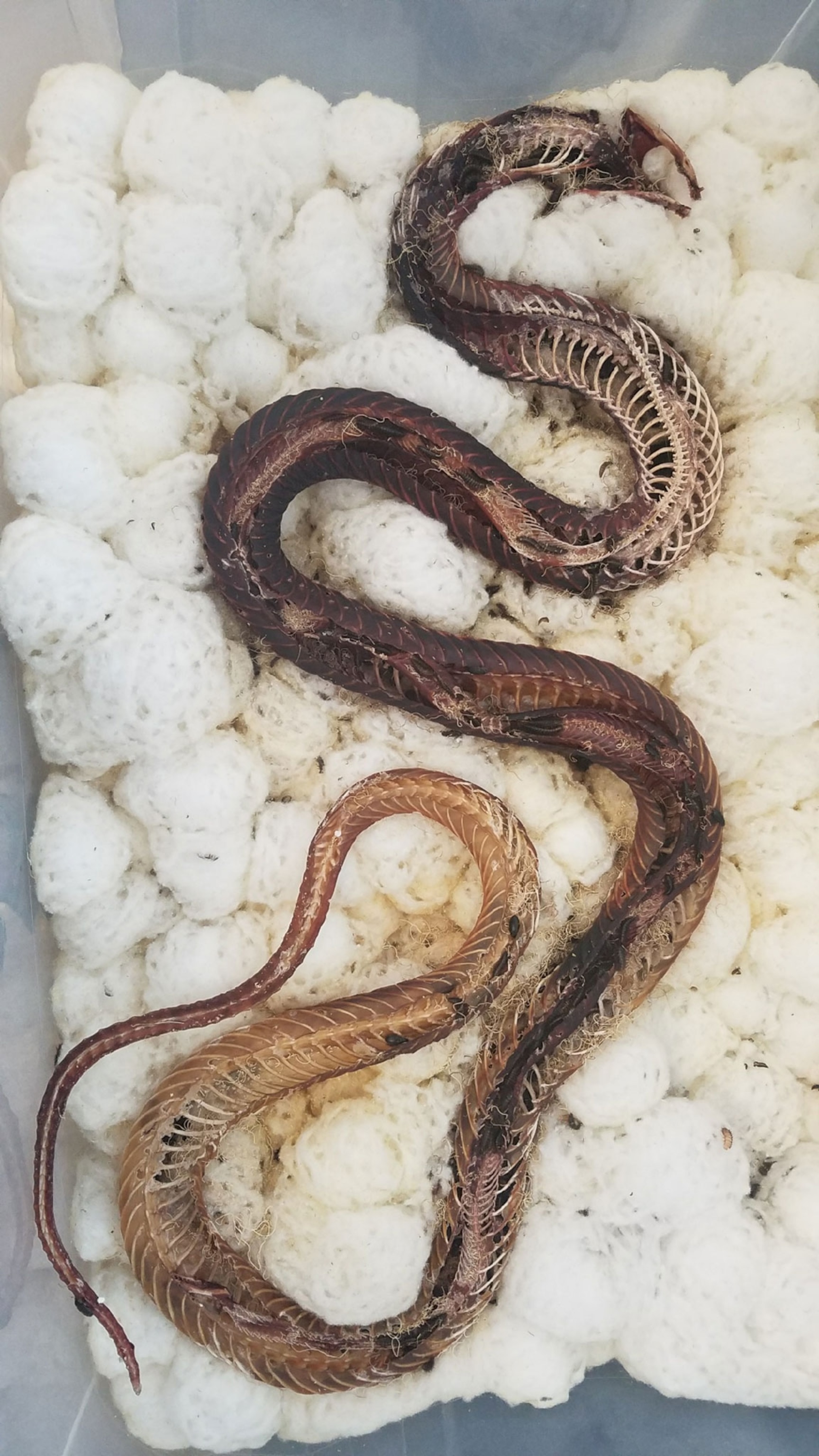
Coffin Flies, Corpse-Eating Beetles, and Other Bugs with Gruesome Jobs
From food to forensics, bugs work on our behalf.
While some insects spend summer plaguing your picnics, others have more important—and rather creepy—work to do.
Pollinators give us staple foods, of course, but what about the working bugs whose jobs go unsung? We recently learned about several tiny cleaners who toil away in museums and even hospitals, so this week we’re giving kudos to them.
Education
Skeletons displayed in museums illustrate how animals evolve, move, and protect themselves. In The Skeleton Revealed, Steve Huskey, a biologist at Western Kentucky University, reveals the bare bones of anatomy with the help of larval brown beetles just three-eighths of an inch long.
Once Huskey dissects and dries a specimen, these flesh-eating beetles, common all over North America, “get in every nook and cranny,” without disturbing a single bone.

“It’s the least destructive way,” to prepare a display skeleton, Huskey says. His beetle colony is two decades old, so cleaning bones is clearly the family business.
Forensics
Other bugs are pickier. They only like fresh corpses.
Adult insects come and go around dead bodies but green bottle fly babies, or maggots, “can’t chew,” so they tend to be the first to arrive. They need “moist tissue” from early stages of decomposition, says Jason Byrd, a forensic entomologist at the University of Florida. “Beetle larvae have strong[er] mandibles,” and can take over when tissue dries out.
This staggered presence of insect species around corpses coupled with factors like temperature and location helps forensic entomologists determine “the minimum time,” a body has been dead, helpful information for criminologists, says Byrd. (See video: Body Farm)
Green bottle flies arrive next, producing “sizable egg masses,” within an hour, says Neal Haskell, a forensic entomologist at the University of Nebraska, Lincoln, and the University of Wisconsin, Madison, and a private consultant to law enforcement agencies internationally. Then come larger black blowflies, followed by tiny coffin flies. Burying beetles like American carrion beetles arrive next, followed by “skin” or brown beetles.
Their behavior is nuanced and so is the science, but it could be the difference between “life and death or imprisonment,” for someone, “so, you’ve got to get it right,” Haskell says.

Medicine
Those little, corpse-loving green bottle maggots also help with human healing.
Medical grade maggots can be used to remove dead tissue on wounds like diabetic ulcers if they “fail to show signs of healing over the course of four weeks or more,” says Ronald Sherman, physician and founder of Monarch Labs, which sells sterile maggots for this treatment by prescription. (See video: Maggot Medicine)
Maggots have “multiple mechanisms,” to heal wounds says Max Scott, an entomologist at North Carolina State University. They eat dead tissue, stopping when they get to the bits you want to keep, and “actively secrete peptides” and possibly other chemicals “that inhibit bacterial growth.”
Last year Scott co-authored a study showing that maggots can be engineered to produce a protein that promotes human cell growth and wound-healing.

The recorded history of maggots used in wound care goes back over a century. And while modern medicine brought antibiotics and other advances, the little bugs have been shown to be successful healers.
If they suffer a bit of an image problem (‘few people use ‘maggot’ as a kindness) what if we just call them’ bottle babies?’ Now don’t you want some?
